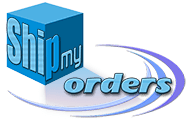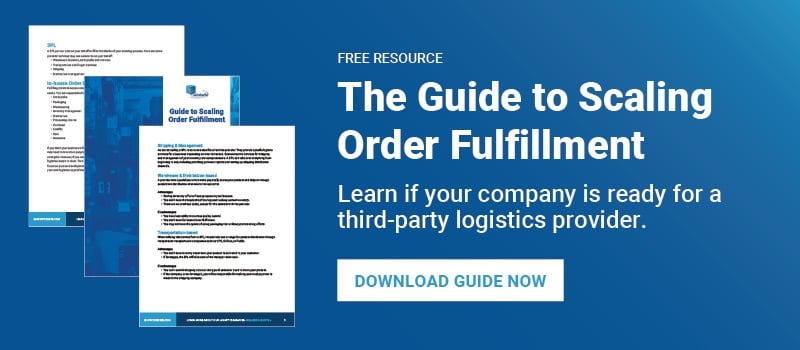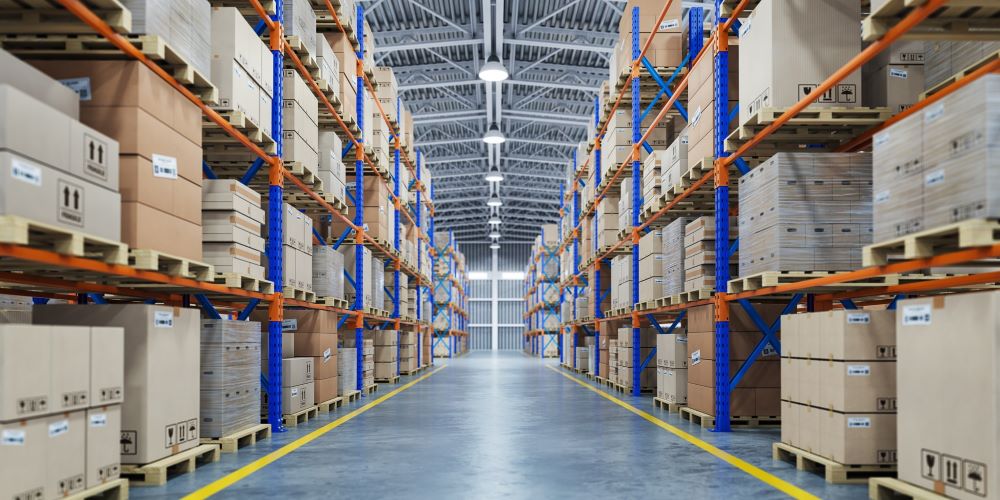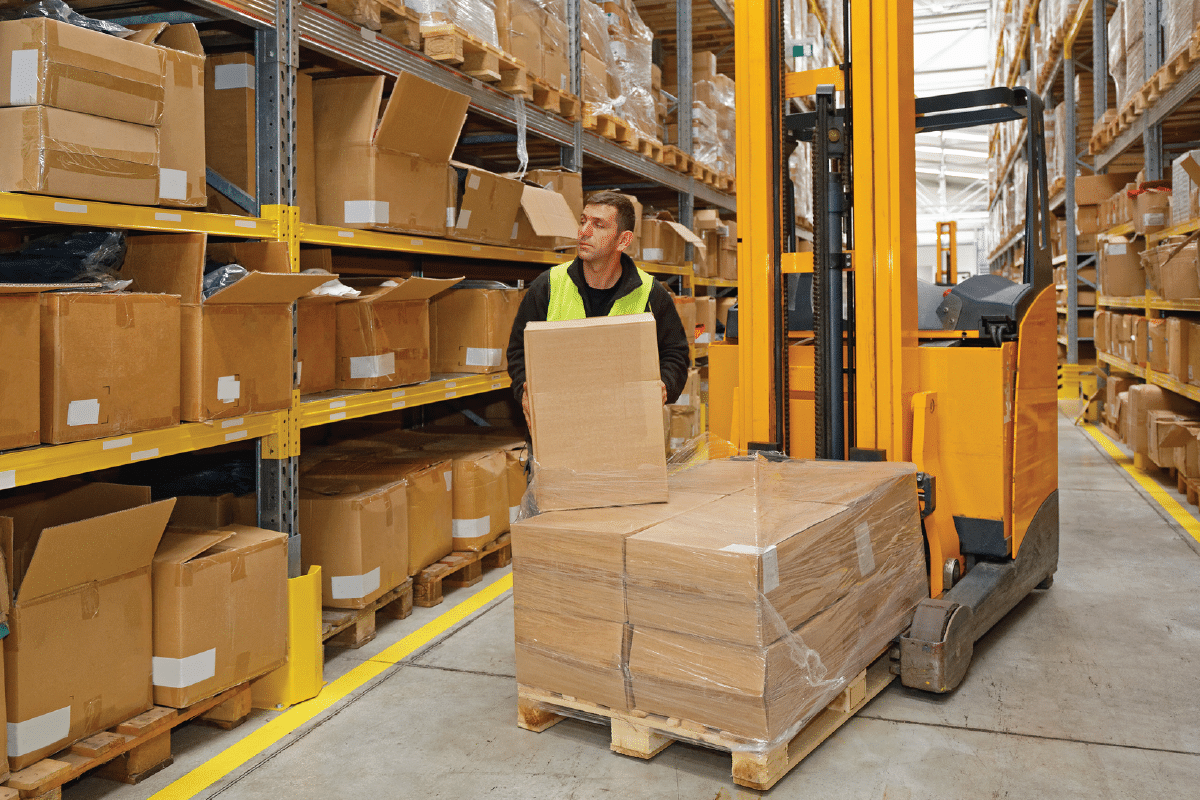
As a business owner, you are probably considering the various ways that you can keep up with your growing company. One solution would be to scale your shipping and fulfillment process so that more orders can reach more customers faster. You could do this through outsourcing it to another party or by enhancing your existing infrastructure. To make the most informed decision, you should first understand exactly what order fulfillment is and how you can use it to benefit your business.
What is Order Fulfillment?
Order fulfillment involves everything that needs to be done in order to get your inventory to each individual buyer. How your inventory is received, how orders are processed, how they are picked and packed for delivery, and how they get to the customer—all of these tasks are integral parts of order fulfillment.
How Does the Order Fulfillment Process Work?
Order fulfillment is the process by which your customers receive their products after placing an order. There are several steps to the order fulfillment process. Leveraging your knowledge of each of these following steps can help you have a more successful venture into eCommerce fulfillment.

Inventory Handling
How your inventory is handled lays the foundation for a successful order fulfillment venture. This involves:
- Receiving inventory at your store or a warehouse
- Classifying and labeling products
- Sorting items into strategic groups
- Shelving products for easy selection
- Inventory storage
Storing inventory yourself means that you will be responsible for shelving the inventory and tracking what products are received and what products are sold so that you can get them to the right customer. A good tracking system will also help you avoid having products go out of stock, which can hurt your business’s reputation.
Inventory Storage
Your 3PL will typically offer short-term storage at their fulfillment center. Some 3PLs may charge extra for long-term storage, with significant price increases kicking in after around 30 days, so you’ll want to know the terms of your contract before signing.
Order Processing
This is the part of the order fulfillment process where you pick purchased products from the shelf and evaluate them for damage before packing them for shipment to the buyer. eCommerce businesses that work with an outsourcer, however, won’t have to worry about these menial tasks. Once they receive the order request, the fulfillment center will handle each step of order processing for you.
Packing
From boxing the product(s) to selecting the carrier, this step prepares the order for shipment.
Shipping
Customers today are used to fast 2-day shipping methods. Many eCommerce businesses contract with a third-party carrier to speed up the process and reduce their shipping costs.
Returns Management
Along with creating a dedicated returns policy, you will also need a system for receiving returns, replacing products, and refunding your customers. Automating this step is best to avoid mistakes and make the process as efficient as possible.
How Can I Improve My Order Fulfillment Process?
The goal of any order fulfillment process should be to get products to customers as soon as possible so that they will be more likely to shop with you in the future. Here are several ways you can improve your order fulfillment process to make this happen.
Classify Inventory
A successful inventory system typically classifies products by type and picking sizes (individual pieces, cases, or pallets) as well as by sales frequency. For example, items that move very quickly would be grouped while products that move slowly would be in a separate group. This will help you better manage the stock levels of your best-selling products. These are best placed in a central location of a warehouse while your slower-moving items are stored in a different area. This strategy will also help reduce the time it takes to pick and pack products for delivery.
Integrate Business Systems
Your existing business systems should be integrated to speed up order fulfillment. These systems might include:
- Warehouse Management
- Warehouse Control
- Enterprise Resource Planning
- Labor Management
- Workforce Performance Management
Integrating these systems will allow you to save time managing inventory and picking orders while improving your visibility among suppliers, shippers, and other organizations that you’ve partnered with.
Automate Processes
You can speed up order fulfillment further by automating some processes. For a small business, a simple investment in an inventory scanner can have a huge impact on your internal operations. Scanning items as they enter and leave a warehouse will allow you to better track your inventory needs so that you don’t find yourself out of stock of those hot-button items.
Related: How to Improve the Order Fulfillment Process
What are Order Fulfillment Services?
There are many order fulfillment services available for eCommerce businesses today. These are designed to further improve your fulfillment processes and earn your company more repeat customers.
eCommerce Fulfillment
An eCommerce fulfillment service can make sure your orders are processed and shipped to the buyer in a timely manner. The provider generally uses shopping cart integration software to make the process as seamless as possible. They will automatically receive the orders from your website so that fulfillment specialists can immediately pick up your inventory from the warehouse, prepare the product for shipment, and ensure the products end up with the right carrier. This will significantly reduce your order fulfillment time so that you can concentrate on other aspects of your business.
Inventory Management
It can be challenging to keep up with your inventory needs as your company grows. You might find yourself so busy that your organization has lapsed, making it time-consuming to find the right item. A commercial warehouse could be just what you need to get back on track. Along with storage, these companies often offer inventory management services as well. Depending on the company, these services offer multiple benefits, including:
- 24/7 access to inventory in real time
- Being able to see and manage all orders
- Automatic updates when your inventory changes
- Alerts when your inventory is low
- Ability to create schedules to order more inventory
The right inventory management system will allow you to quickly and easily manage your inventory so that you can prevent backorders and dissatisfied customers.
Kitting Services
How your packaging looks is important to sending the right message to your customers. With kitting services, you will be able to deliver more consistent, custom-designed packaging at a lower cost than doing it yourself with store-bought products. Kitting specialists know how to efficiently package inventory using quality materials. They can handle promotional kitting, custom packing, re-labeling, assembly of POP kits, and the pre-assembly of stock items. Your kitting services provider will make sure that your kits are put together correctly so that they make the right impression on the end customer.
Reverse Logistics & Returns
To ensure customer satisfaction, you need a quick and easy returns process. An order fulfillment partner can handle all the logistics, from replacing products to making refunds, using a consistent system that makes returns as simple as possible for the customer. Returns should be just as seamless as your ordering process so that your customers are more likely to shop with you in the future. With a reverse logistics and returns service, you can give your customers that high-quality experience they are looking for without having to worry about handling product returns yourself.
All of these services can be provided by a third-party logistics provider so that you can focus on what’s most important: improving your business.
Related: What is a Fulfillment Center?
What is Third-Party Logistics (3PL)?
When a business uses a third party to outsource its warehousing, order fulfillment, and shipping services, it is known as Third-Party Logistics or 3PL. Today, more and more companies are turning to 3PLs to scale their operations.
How Do I Know It’s Time to Work With a Third Party Fulfillment Company?
When your business has grown so much that keeping up with every aspect of order fulfillment is challenging and expensive for you, it is probably time to look into partnering with a 3PL provider. Even with a staff to help you, you will find the costs associated with labor, storage, and shipping can be higher than if you outsourced with a fulfillment center.
Advantages of Working With a Third-Party Logistics Provider
With the help of a Third-Party Logistics provider, you will be able to concentrate on managing your business while enhancing your order fulfillment process so that your customers receive the same—or even better—high-quality service that they are used to. These companies are capable of handling every aspect of order fulfillment: receiving inventory, labeling and sorting products, processing orders, choosing a carrier, packaging purchases, shipping, and returns management—all while automatically tracking inventory to prevent backorders.
Other advantages of working with a Third-Party Logistics provider include:
- Existing Logistical Infrastructure: You will be able to utilize the 3PL’s infrastructure, which can help you access markets you couldn’t have reached on your own.
- Improved Economies of Sale: Your provider will most likely partner with many other companies, like shipping carriers, that can save you a lot of money throughout the order fulfillment process.
- Turnkey Customer Service and Returns Process: You can utilize a customer service and returns system that’s already in place rather than handling it on your own.
Working with a 3PL provider can also give you more time to focus on product development, business planning, marketing, and other core tasks specific to your company without sacrificing the customer experience.
Disadvantages to Working With a Third-Party Logistics Provider
As a business owner who is considering outsourcing order fulfillment, you should know about the disadvantages of working with a Third-Party Logistics company. These include:
- Trusting your inventory to another party
- Not having full control over fulfillment processes
- Minimal customer interaction
- Not being able to develop your infrastructure
- Sacrificing some of your company’s brand image
Depending on your specific goals, you may find that the key benefits of partnering with a 3PL outweigh these disadvantages. Hiring a widely recognized Third-Party Logistics company will give you some peace of mind that your inventory—and your customers—are in good hands.
How to Choose Your 3PL Provider
With all the different Third-Party Logistics companies out there, it can be hard to find one that you feel completely comfortable with. The 3PL will be managing one of the most important parts of your business, so it’s best to select one that is known for providing reliable order fulfillment services. When choosing your provider, you should also look for:
- Warehouse Location: Since location plays a major factor in how quickly customers get their products, you should find out where the distribution centers are for the Third-Party Logistics company and how long your inventory will take to get to the end customer. Ideally, they will have more than one warehouse so that you can extend your reach to far-away customers without sacrificing shipping speed.
- Cost of Services: At a minimum, the 3PL provider should be able to reduce your costs for storing and shipping your products. Other services you might need to pay for include picking and packaging products as well as labeling, kitting, and returns management. The fees for these services will vary, so you should do your research to determine who can give you the best deal without sacrificing overall quality.
- Company Reputation and Stability: Make sure your 3PL provider has a good reputation for prompt deliveries and excellent customer service. They should have a proven track record of successful partnerships with businesses that are similar to yours. Read online reviews from trustworthy sources or ask the 3PL company for references to satisfy their customers. You should also make sure the company is financially stable, or you may have to suddenly find a new provider.
- Scalability: As your business grows, you will need to be able to keep up with demand. A 3PL should have the capability to adapt during periods of high-volume orders, such as the holiday season. You will also want to ask them how they handle staffing to adjust for changes in demand and the other ways they can help you scale your business.
Related: How to Choose a 3PL Provider in 3 Easy Steps
How Much Does Order Fulfillment Cost?
The cost of order fulfillment will vary depending on the services needed and the company you decide to work with. However, we’ve gathered data from a recent survey by FulfillmentCompanies.net to determine a range of costs for order fulfillment. Common costs include:
- Initial setup: Most 3PLs charge a one-time setup fee, which can be anywhere from $100 to $1,000 depending on your company.
- Account Management: Many fulfillment companies offer a flat fee for account management services. This could be anywhere from $75 to $250 monthly.
- Inventory Receiving, Intake, and Storage: These tasks can cost you between $5 to $15 for each pallet of inventory. If you only need storage, however, you can expect to pay a fee of $0.30 to $0.55 per cubic foot each month. Items that are too small for pallets might go into storage bins with a $1 to $2.50 fee attached to each bin.
- Order fulfillment, Kitting, and Return Services: Your provider may charge $3 to $3.75 per item, or they may charge $30 to $50 hourly for these services. Depending on the company, returns may be a separate charge.
- Shipping Orders: The cost of shipping varies by product weight and carrier, but on average, companies have been able to save up to 30% on monthly shipping costs by working with a 3PL company that has contracts with major shipping carriers.
You will likely find that these costs are much more reasonable than attempting self-fulfillment. Doing it yourself means you will have to pay for your own packaging, labeling, and shipping, not to mention the costs that are associated with labor. If you’re still on the fence, here are some criteria you can use to evaluate if working with a 3PL provider is right for you:
- Your business has expanded so much that it makes order fulfillment challenging.
- You want to save money on storage and shipping costs.
- You’re looking to scale your business without adding more employees.
- You’re in a geographic area that’s not ideal for fast deliveries.
- You don’t want to rent an expensive warehouse space you might not use.
- You would like more time to focus on developing your business.
If these all sound good to you, it might be time to explore your options with a 3PL company.
Related: How Much Does Order Fulfillment Cost?
Order Fulfillment vs Order Management
Order fulfillment is about getting orders to customers and making sure they receive what they want on time. Order management handles everything from when an order is placed to when it's finished, like keeping track of orders and making sure they're processed correctly. So, order management sets things up, while order fulfillment gets it done, making sure customers are happy with their purchases.
Misconceptions About Order Fulfillment
Even today, some misconceptions keep businesses from outsourcing order fulfillment to a third party. Here are three of the most common ones:
1. My business is too small to need an outsourcer.
Even small businesses could benefit from using a fulfillment center. Even if you shipped only 25 packages a day, that’s a lot of time and money that you’re spending on labor costs, inventory tracking, labeling, picking, and shipping, not to mention any of the returns that you need to process. Often, partnering with an outsourcer is more economical even for smaller companies.
2. My customers will know that I outsource my order fulfillment.
This isn’t always true. A good fulfillment partner will keep your brand in mind and use plain packing materials, so customers won’t ever know you outsource. Alternatively, if you decide to collaborate with a major fulfillment brand and use their packaging, this could actually enhance your credibility as a seller since the brand will be more recognized among customers.
3. When you work with an outsourcer, you can expect all items to arrive perfectly.
Outsourcing is just like any other process: Mistakes will happen. Packages may get misplaced, or customers might be sent the wrong product. However, you can reduce these instances by working with a reputable fulfillment center that knows how to resolve these issues in a timely manner. These partners usually have a seamless customer service process that will ultimately ensure the correct product ends up with the right customer.
Order fulfillment involves many different steps that should be handled strategically to ensure you have a successful venture. As a business owner, you might find that outsourcing to a fulfillment center provides the most benefit to your company. With the right partner, you will be able to focus on growing your business while ensuring your customers are satisfied with their shopping experience from start to finish. If you're looking for a trusted and quality 3PL company, Ship My Orders is here to help. Contact us today to streamline your fulfillment process and elevate your customer satisfaction!
Contact Ship My Orders today for assistance with your order fulfillment needs.
FAQs
Q: How Does Location Affect Shipping, Fulfillment, and Logistics?
Fulfillment location plays a key role in shipping and fulfillment. Customers today have gotten used to the 2-day shipping offered by companies like Amazon, so you’ll need to meet this goal if you want to compete. If you do your own fulfillment, you’re limited to just your geographic location, but this may not be best in terms of reducing transit time. Do some research to determine where the highest volume of sales is coming from. With a fulfillment partner, you can have multiple warehouses strategically located in cities that are near your customers to reduce fulfillment time. Additionally, the closer you are to your customers, the lower your shipping costs will be.
Q: Will 3PL Decrease My Shipping Times?
The time a package takes to arrive to a customer has a significant impact on their purchase decision. A 3PL can help decrease shipping times through multiple distribution centers. Even using just two centers in key populations will help you reach 80% of your customers in 1-2 days with ground shipping. A fulfillment partner will know which locations will help you achieve this goal.
Q: Which Shipping Carriers Do Fulfillment Centers Use?
The main goal of a fulfillment center is to get your inventory to the buyer as quickly as possible. To accomplish this goal, most will have contracts with many of the top carriers, like FedEx, USPS, DHL, and UPS. Factors like location, product weight, and shipping price and speed will determine the best choice.


-1.png)


